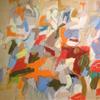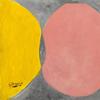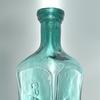Harvard Art Museums Receive Important Gift of American Silver
- CAMBRIDGE, Guam (US)
- /
- March 22, 2022
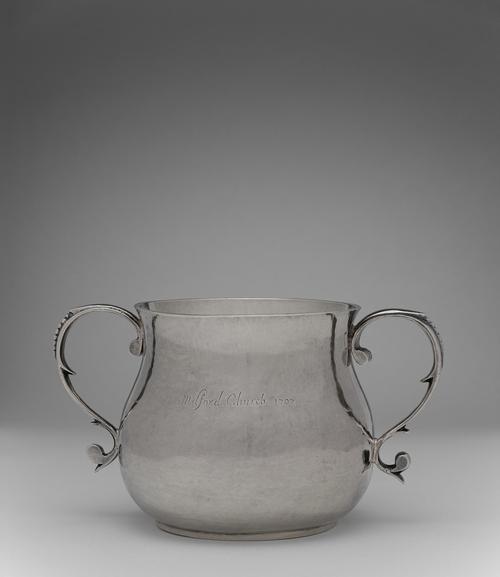
The Harvard Art Museums announce a transformative gift of 21 works of 18th-century American silver from the collection of Daniel A. Pollack and Susan F. Pollack. The gift comprises a range of finely made vessels and table implements intended for domestic use, including cups, bowls, spoons, tankards, and teapots crafted by noted silversmiths from Boston, New York, Philadelphia, and Trenton. There is also a stunning caudle cup, an example of ecclesiastical silver made by Edward Winslow and believed to have been used during communion at First Congregational Church in Milford, CT. The Pollacks’ gift strengthens the museums’ noted holdings of 17th- to 20th-century silver and comes at a time when curators and postdoctoral fellows are working to reimagine the balance among paintings, sculptures, and design objects on view in the galleries.
“The story of silver is in many ways a story of the Americas. Like other commodities such as coffee, mahogany, sugar, and tea, silver helps us unite the known world of the 16th century with our own time,” said Horace D. Ballard, the Theodore E. Stebbins Jr. Associate Curator of American Art at the Harvard Art Museums. “The Pollacks’ generosity allows us to more fully engage the capacious and complex story of European privilege and Afro- and indigenous labor across the Spanish-occupied Americas and British North America during the age of colonialization. It is estimated that 50 to 80 percent of the world’s silver from the 16th to early 19th century came from the infamous silver mines of Potosi in the Viceroyalty of Peru. Silver ore was shipped to China from America’s primary Pacific port in Peru; traded to Europe along with porcelain; melted into coin, plate, or brick; and then traded back to the Americas through the eastern seaboard ports of the Atlantic coast, to be molded, designed, and sold to merchants, religious institutions, and wealthy families. Works by American silversmiths of the 18th and 19th centuries are noted for their innovative silhouettes, turnings, and naturalistic allusions to animals and plants. The Pollack gift and its upcoming installations in our galleries will foreground this global orientation around luxury, leading us to ask new questions about hemispheric identity and aesthetic legacy.”
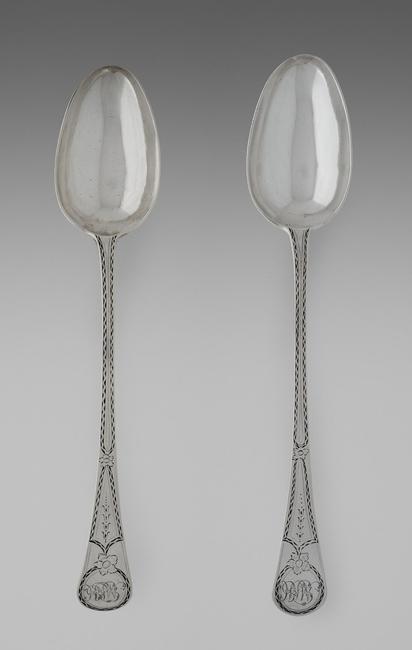
Highlights of the gift include, from Boston-based silversmiths, a pair of ragout (serving) spoons from 1786 by Paul Revere, Jr., and a c. 1765 rococo-style cream jug and c. 1775 porringer (small bowl) with a keyhole-pattern handle by Benjamin Burt; a soup ladle with a shell-shaped bowl from c. 1772 and a waiter (small salver) from c. 1765 by the pioneering Jewish silversmith and philanthropist Myer Myers of New York; and an apple-shaped teapot from c. 1745 by Joseph Richardson, Sr., for prominent Quakers Hannah and William Logan, as well as a coffeepot by Richardson’s sons, Joseph Jr. and Nathaniel, both of whom trained with their father in Philadelphia. These are the first works by the Richardsons to enter the museums’ collections. The earliest object from the gift is the aforementioned caudle cup from 1707 by Edward Winslow of Boston.
Over the next six months, select objects from the Pollack gift will be installed in galleries on Level 2 of the museums. By mid-March, the Winslow caudle cup and the Myers soup ladle, among other objects, will be installed in the silver cabinet. By mid-May, the case featuring design objects in the museums’ Atlantic World gallery will highlight a rare two-handled silver punch strainer designed in the 1760s by Daniel Parker of Boston. By late July, the Pollack Arcade gallery on the second floor will host a case of 14 objects from the gift. Interpretive labels for the case will address Daniel Pollack’s longstanding commitment to American art at the Harvard Art Museums while also foregrounding the global threads of racialized labor and colonial trade at the heart of America’s colonization and our national becoming.
This gift of silver follows Daniel Pollack’s passing in October 2019 and builds upon a number of other significant gifts and generous support from the Pollacks over the last 17 years. An ardent supporter of the museums, Daniel was a member of the Director’s Advisory Council and served as chair of the American Art Curatorial Committee. The couple’s commitment also includes contributions toward the renovation and expansion of the Harvard Art Museums (which reopened in the fall of 2014) as well as the naming of four arcade galleries on the second floor overlooking the Calderwood Courtyard.
“We are thrilled to be able to honor Dan’s legacy; I’m grateful to Susan for her gracious partnership and support,” said Martha Tedeschi, the Elizabeth and John Moors Cabot Director of the Harvard Art Museums.
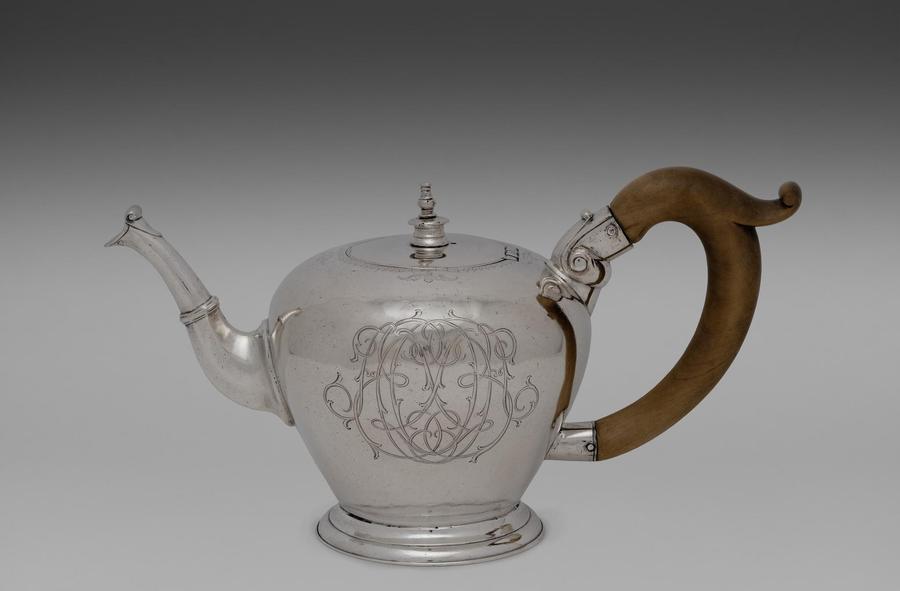
Previous gifts of art include a 2016 gift of three pieces of ecclesiastical silver: a beaker (c. 1670) and two tankards (1690; 1759) used by churches in Salem, MA, for over 300 years. Other gifts have included prized paintings by American artists: Still Life with Pewter Candlestick and Clarinet (1886) by William Michael Harnett; and the trompe l’oeil-style Hanging Woodcock (1897) by George Cope and Theodore Roosevelt’s Cabin Door (1905) by Richard LaBarre Goodwin, the first works by either of these artists to enter the museums’ collections. Through the establishment of the Daniel A. Pollack, Class of 1960, American Art Acquisition Fund, the couple has supported the purchase of 19 paintings, including the highly detailed Still Life with Watermelon (1822) by Sarah Miriam Peale, one of the first professional female artists in the United States; the kaleidoscopic Ventriloquist (1952) by Jacob Lawrence, a prodigy of the Harlem Renaissance; and a stunning littoral scene of Rhode Island by Canadian-born African American painter Edward Mitchell Bannister—the first acquisition for the museums made by new American art curator Horace Ballard.
Daniel A. Pollack (Harvard College A.B. ’60, University of Oxford M.A. ’62, Harvard Law School LL.B. ’65) was a distinguished lawyer who founded and led the Pollack & Kaminsky law firm in New York City for more than 40 years, before joining the New York office of McCarter & English in 2009. Susan F. Pollack (Harvard Radcliffe Class of 1964, Harvard Law School ’67) has served as general counsel to New York City’s Department of Consumer Affairs and as a senior lawyer at Citibank; she has worked with the law firms of Barrett, Smith, Schapiro & Simon as well as Curtis, Mallet-Prevost, Colt & Mosle.
Contact:
Jennifer AubinHarvard Art Museums
jennifer_aubin@harvard.edu





